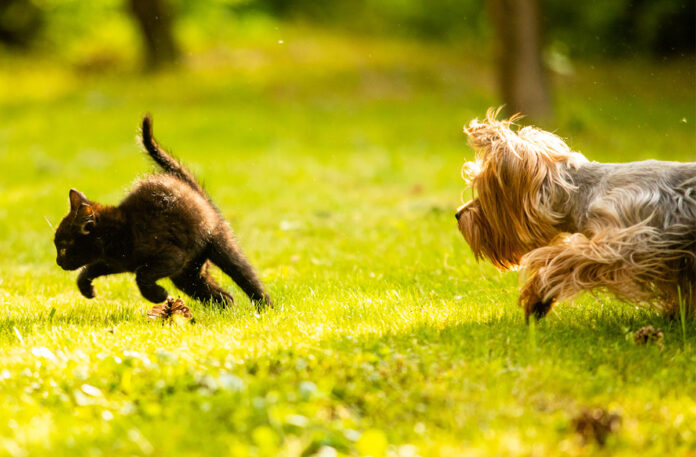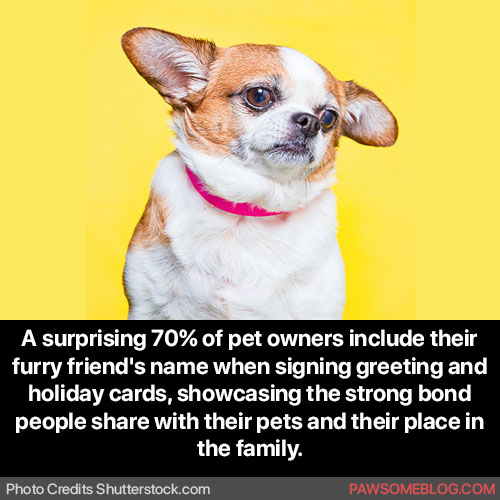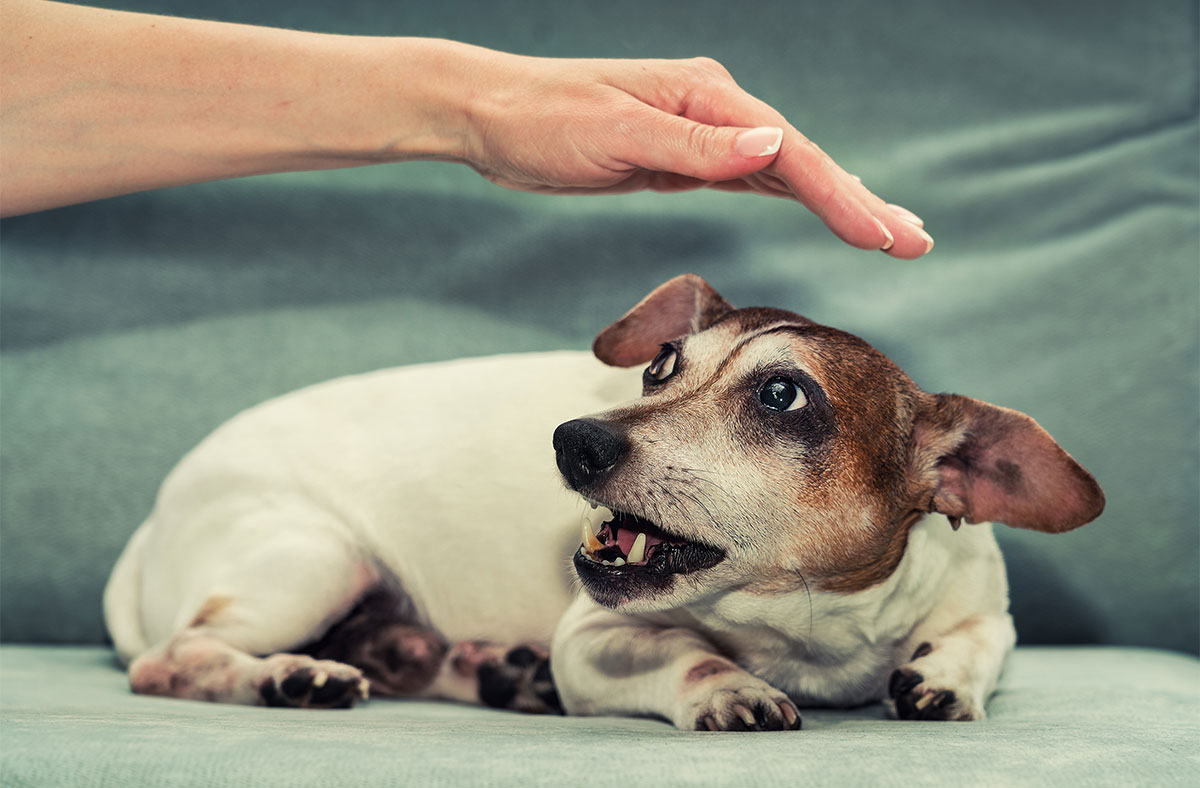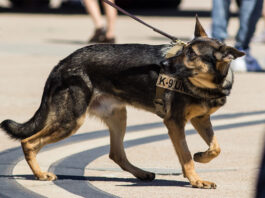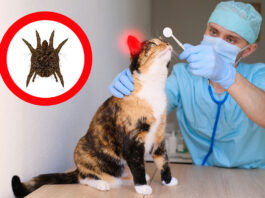We love our cats and we also love our dogs! Whether you have a multi-pet household or you love to take your dog for a walk around the block, you may be wondering why some dogs are prone to chasing cats. If you’ve ever had a dog, chances are you’ve seen them exhibit this behavior before. Rest assured, there are steps you can take to ensure that your dog isn’t chasing off the neighborhood cats. Here’s everything you need to know about dogs chasing cats.
A Dog’s Prey Drive
Prey drive is the driving force behind your dog’s desire to chase cats. A prey drive can be defined as a dog’s desire to hunt, stalk, or capture potential prey. Since dogs are natural omnivores and stem from a long lineage of meat-eating wolves, they naturally possess a prey drive. Even dogs with lower or seemingly nonexistent prey drives will chase cats if the occasion arises. Ultimately, you know your dog best and can pick up on whether the chasing is intentionally harmful or not. However, it is best to correct this unwanted behavior as soon as it occurs.
Much like when a dog plays with a stuffed toy or ball, it piques their interest as it mimics potential prey. When your dog sees a moving, smaller animal in the distance, like a rabbit, squirrel, or cat, they’ll feel inclined to chase it. It’s in their nature. Dogs are hardwired to track and capture prey. It can also be your dog’s way of trying to play with a cat, but it’s best if this behavior stops the moment it presents itself. After all, you provide your dog with love, food, and shelter, so there’s no need for them to hunt!
Can Cats and Dogs Be Friends?
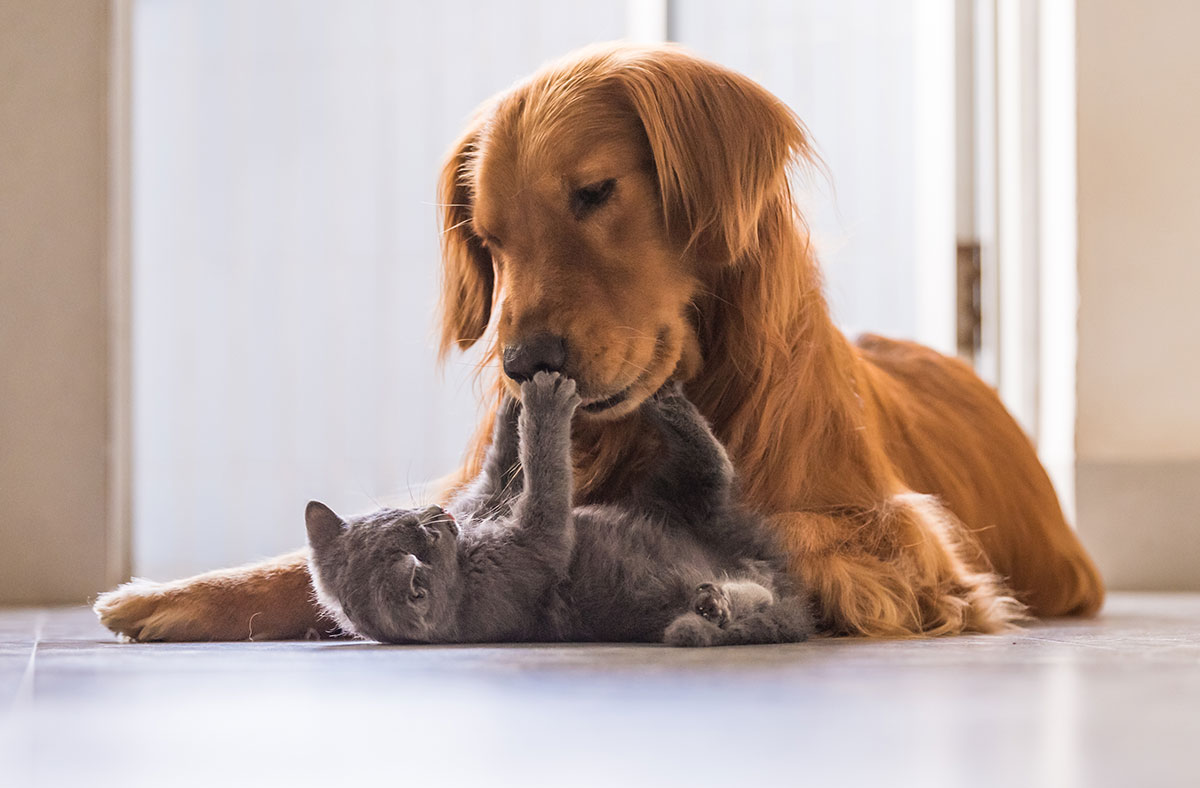
Often, dogs and cats can be friends, as long as the dog in question doesn’t have a high prey drive. A prey drive can be determined by simply observing how your dog reacts to squirrels when they stare out the window or on a walk. It can also be observed by gauging your dog’s play style. The more intense the play is, chances are they might have a higher prey drive. So, despite the long-time tales of dogs and cats being sworn enemies, these two incredible animals can coexist in peace, and some even go on to form great friendships!
How to Correct Unwanted Behavior
It’s important to check your dog’s chasing behavior as soon as they correct it. Successfully teaching your dog commands like ‘no,’ ‘stay,’ and ‘leave it’ can be powerful tools against correcting concerning chasing behavior. Dogs thrive off of instruction and are naturally obedient creatures. Even dogs with fairly high prey drives can be conditioned and trained to leave smaller animals alone, including cats. While it’s never a good idea to leave a dog with a high prey drive alone with a smaller animal, it is important to familiarize them with smaller animals. This can be done safely from a distance with a proper harness and leash. The more you condition and correct your dog, the less likely they are to exhibit concerning behavior.
All in all, with the right tools, training, and patience, a dog’s desire to chase cats can be corrected. Perhaps your dog and neighborhood cat might even go on to form a great friendship!
